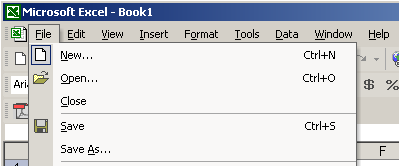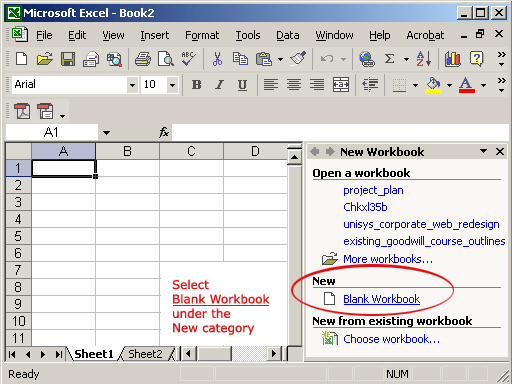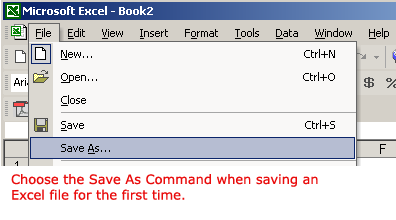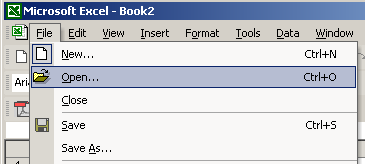Excel XP -
Create, Open, and Save Workbooks

Excel XP
Create, Open, and Save Workbooks


/en/excelxp/identifying-basic-parts-of-the-excel-window/content/
The File menu contains all of the operations we'll discuss in this lesson: New, Open, Close, Save, and Save As.

This is used to create a new workbook.
This is used to open an existing file from a floppy disk or hard drive of your computer.
This is used to close a spreadsheet.
This is used when you're saving a new file for the first time or saving an existing file with a different name.
This is used to save a file that has had changes made to it. If you close the workbook without saving, any changes made will be lost.
To learn more, check out the different parts of the Excel window.
A blank workbook is displayed when Microsoft Excel XP is first opened. You can type information or design a layout directly in this blank workbook.
 New from the menu bar.
New from the menu bar.

Every workbook created in Excel must be saved and assigned a name to distinguish it from other workbooks. The first time you save a workbook, Excel will prompt you to assign a name through the Save As operation. Once the file is assigned a name, any additional changes made to the text, numbers, or formulas must be saved using the Save operation.
 Save As from the menu bar.
Save As from the menu bar.

 Save from the menu bar.
Save from the menu bar. Save button on the Standard toolbar.
Save button on the Standard toolbar. If you're saving the file for the first time and do not choose a file name, Microsoft Excel will assign a file name for you.
If you're saving the file for the first time and do not choose a file name, Microsoft Excel will assign a file name for you.
 It is a good idea to save frequently when working in a spreadsheet. Losing information is never fun! You can quickly save your spreadsheet by using the quick-key combination Ctrl+S.
It is a good idea to save frequently when working in a spreadsheet. Losing information is never fun! You can quickly save your spreadsheet by using the quick-key combination Ctrl+S.
You can open any workbook that has previously been saved and given a name.
 Open from the menu bar.
Open from the menu bar.

 Close from the menu bar. The workbook in the Excel window is closed.
Close from the menu bar. The workbook in the Excel window is closed.
 Excel XP will prompt you to save information if anything has been typed between the last save and the time you close the file.
Excel XP will prompt you to save information if anything has been typed between the last save and the time you close the file.
/en/excelxp/enter-edit-and-delete-data/content/